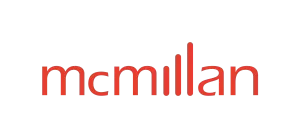- within Tax topic(s)
- with Senior Company Executives, HR and Finance and Tax Executives
- in United States
- with readers working within the Accounting & Consultancy, Insurance and Healthcare industries
On September 10, 2025, the Canada Revenue Agency (the "CRA") announced1 major changes to its Voluntary Disclosures Program (the "VDP"). The updated program will relax the requirements for a valid voluntary disclosure and provide greater potential relief from interest and penalties. The terms of the VDP have been shortened to simplify the program and its administrative processes. The shift in policy marks a retreat from the more complex and stringent VDP that was introduced in 2018.
The latest changes were introduced with the release of the new Information Circular IC00-1R7 – Voluntary Disclosures Program2 ("IC00-1R7") and GST/HST Memorandum 16-5-1 Voluntary Disclosures Program3 ("GST/HST Memorandum 16-5-1"). Both documents will apply to voluntary disclosures received on or after October 1, 2025. Voluntary disclosures received prior to October 1, 2025 will be considered under the respective predecessor programs, as set out in Information Circular IC00-1R6, Voluntary Disclosures Program4 and GST/HST Memorandum 16-5, Voluntary Disclosures Program.5
IC00-1R7 addresses relief available under the Income Tax Act. GST/HST Memorandum 16-5-1 deals primarily with relief available under the Excise Tax Act; however, its scope is wider than in the past. It addresses relief under several other taxation statutes, including the Underused Housing Tax Act and the Select Luxury Items Tax Act.
Changes Under IC00-1R7
Relaxation of the "Voluntary" Requirement
Voluntary disclosures will now generally only be considered not to be "voluntary" if an audit or investigation has been initiated against the taxpayer or a related taxpayer in respect of the information being disclosed.6
Previously, voluntary disclosures were more readily disqualified for lack of voluntariness. The CRA considered disclosures not to be voluntary if an applicant was aware of an enforcement action set to be conducted, or if an enforcement action had been initiated against the taxpayer, a person associated with, or related to, the taxpayer, or against a third party where the action against the third party was sufficiently related. "Enforcement action" was broadly defined. Enforcement actions included not only audits and investigations, but also examinations, CRA requests or demands about unfiled returns, requests or demands regarding "other tax affairs", and direct contact from a CRA employee about non-compliance.7 Such communications (other than those related to audits and investigations) no longer automatically disqualify a taxpayer from making a voluntary disclosure. Rather, recipients of such communications can now be streamed into the new "prompted" application category.
Introduction of New Unprompted/Prompted Streams and Removal of the General/Limited Programs
The new VDP categorizes applications as "unprompted" or "prompted", and determines levels of available relief accordingly.
According to IC00-1R7, a VDP application will generally be considered to be "unprompted" in the following situations:
- an application is made when there has been no communication (verbal or written) about an identified compliance issue related to the disclosure; or
- an application is made following an education letter or notice that offers general guidance and filing information related to a particular topic.
An application will generally be considered to be "prompted" in the following situations:
- an application is made following verbal or written
communication about an identified compliance issue related to the
disclosure, which may include letters or notices (excluding
education letters) to the taxpayer with one or more of the
following:
- an identification of a specific error or omission found on the taxpayer's account; or
- a deadline to correct an error or omission, where there is an expectation for the taxpayer to file or comply; or
- an application is made after the CRA has already received information from third party sources regarding the potential involvement of a specific taxpayer (or of a related taxpayer) in tax non-compliance.
Greater Relief
"Unprompted" VDP applications will normally be eligible for general relief, which may include relief from 75% of the applicable interest resulting from the disclosed non-compliance, and 100% relief from applicable penalties. "Prompted" VDP applications will normally be eligible for partial relief, which may include relief from 25% of the applicable interest and up to 100% relief from applicable penalties. VDP applicants that are eligible for relief will be granted protection from prosecution, and gross negligence penalties will not apply in respect of the information disclosed.
By comparison, the old "General" VDP only granted (i) relief from 50% of the interest resulting from the disclosed non-compliance and only in respect of years preceding the three most recent taxation years, (ii) a waiver of penalties, and (iii) assurance that the taxpayer would not be referred for criminal prosecution. The old "Limited" program did not grant any interest relief and waived only gross negligence penalties.
Greater Specificity About What is to be Included in an Application
IC00-1R7 specifies that a VDP application should include the supporting documentation needed to correct the non-compliance for the most recent six years. However, if the errors or omissions relate to assets or income that are located outside Canada, documentation for the most recent ten years must be included. Furthermore, IC00-1R7 clarifies that a tax year within the above timeframes with no errors or omissions does not need to be included with the application.
Completion of Form RC199 is now required, and no longer merely suggested. The form itself remains unchanged (at least for now).
As before, the CRA may request additional documentation.
Changes under GST/HST Memorandum 16-5-1
Expanded Scope
GST Memorandum 16-5-1 addresses the CRA's discretionary authority to provide relief under the following legislation, including several provisions not previously contemplated:
- sections 88, 281.1, and 284 and subsection 284.1(3) of the Excise Tax Act
- section 4 of the Credit for Provincial Relief (HST) Regulations
- sections 173 and 255.1 of the Excise Act, 2001
- sections 100 and 125 of the Greenhouse Gas Pollution Pricing Act*
- sections 85 and 120 of the Select Luxury Items Tax Act*
- sections 26 and 48 and subsection 33(7) of the Underused Housing Tax Act*
- subsections 72(1) and 105(1) of the Global Minimum Tax Act*
- sections 57 and 90 of the Digital Services Tax Act
- sections 30 and 55 of the Air Travellers Security Charge Act
- section 37 of the Softwood Lumber Products Export Charge Act, 2006
*Not captured under the previous memorandum
Increased Eligibility and Greater Relief
GST/HST Memorandum 16-5-1 is significantly simpler than its predecessor. It adopts the same new voluntariness criteria set out in IC00-1R7. It also adopts the same unprompted and prompted streams and their corresponding levels of relief. The old General and Limited voluntary disclosure categories are eliminated.
As before, the new memorandum accounts for wash transactions, but now specifies that wash transactions within a VDP application will receive 100% relief from applicable penalties and interest where the transaction would be eligible for a reduction of penalty and interest under the policy set out in GST/HST Memorandum 16-3-1 Reduction of Penalty and Interest in Wash Transaction Situations,8 which remains unchanged.
Greater Specificity Regarding What is to be Included in an Application
Most notably, GST/HST Memorandum 16-5-1 requires that applications include supporting documentation needed to correct the non-compliance for the most recent four years. As with new IC00-1R7, a reporting period within the above timeframe with no errors or omissions does not need to be included with the application.
Completion of Form RC199 is now required and not merely suggested.
Practical Considerations
Taxpayers should consider whether it would be advantageous to hold off on filing a VDP application until the new program takes effect on October 1, 2025.
Taxpayers should also carefully review new IC00-1R7 and GST/HST Memorandum 16-5-1, particularly the list of "What to include". Applications may be denied if they do not include sufficient information to support the disclosure.
The elimination of the Limited voluntary disclosure category raises questions about how VDP applications will be treated if the CRA finds that there was an element of intentional conduct. The new guidance states that the VDP "is not intended to serve as a vehicle for persons to intentionally avoid their legal obligations under legislation administered by the CRA".
Background/History
The amendments mark a return to a simpler approach to voluntary disclosures and are presumably intended to address a reduction in VDP applications in recent years caused by overly strict criteria. It appears that the changes endeavour to encourage tax compliance (not only curing the past but also bringing taxpayers into the tax system going forward) and increase the collection of tax revenues that could otherwise be lost to the Government.
New IC00-1R7 and GST/HST Memorandum 16-5-1 strike a better balance between simplicity and certainty. Most significantly, by relaxing the "voluntary" criteria, new IC-007 and GST/HST Memorandum 16-5-1 represent a significant expansion of eligibility as compared to the last two iterations of the program.9
It is worth noting that the new VDP does not reintroduce the "No-Name" Disclosure Method that was previously available under IC00-1R5, which allowed the CRA to confirm that an application did not contain anything disqualifying, and even advise on the possible tax implications of disclosure, prior to the identity of the taxpayer being revealed.10
Overall, the new changes appear to be very positive for taxpayers. However, the proof of the pudding will ultimately be in the eating.
Footnotes
1. CRA Newsroom, "Made a mistake on your taxes? Upcoming changes to the Voluntary Disclosures Program", September 10, 2025.
2. CRA, "Information Circular IC00-1R7 – Voluntary Disclosures Program", September 10, 2025.
3. CRA, "GST/HST Memorandum 16-5-1 Voluntary Disclosures Program", September 10, 2025.
4. CRA, "Information Circular IC00-1R6, Voluntary Disclosures Program", December 15, 2017 ("IC00-1R6").
5. CRA, "GST/HST Memorandum 16-5, Voluntary Disclosures Program", December 15, 2017 ("GST/HST Memorandum 16-5").
6. According to the new guidance, "audits" or "investigations" are not limited to those conducted by the CRA. They can also be conducted by a law enforcement agency, securities commission, or other federally or provincially regulated authority.
7. IC00-1R6.
8. CRA, "GST/HST Memorandum 16-3-1 Reduction of Penalty and Interest in Wash Transaction Situations", April 29, 2010.
9. IC00-1R6; GST/HST Memorandum 16-5; Information Circular IC00-1R5 – Voluntary Disclosures Program "IC00-1R5", January 13, 2017.
10. IC00-1R5.
The foregoing provides only an overview and does not constitute legal advice. Readers are cautioned against making any decisions based on this material alone. Rather, specific legal advice should be obtained.
© McMillan LLP 2025






